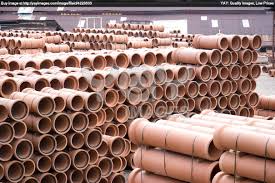Archives
Don’t Let Tree Roots Ruin Your Easter Weekend
A Message to Property Managers
As property managers, you’re likely looking forward to a well-deserved break this Easter Long Weekend. However, while you’re enjoying some time off, it’s essential to remember that tree roots never take a holiday. They continue to grow relentlessly, posing a significant threat to sewer drains and causing potential headaches for your tenants and property owners.
One of the most common issues property managers face, especially in older neighborhoods with mature trees, is tree roots infiltrating sewer lines. These roots are drawn to the moisture and nutrients inside the pipes, and once they find their way in, they can quickly grow and cause blockages, leading to costly repairs and inconveniences for tenants, owners and you their property manager.
But fear not, there is a solution: Vaporooter.
Vaporooter is a highly effective product designed to stop tree roots from growing in sewer drains without costing your owners a fortune. Its powerful formula penetrates the roots and inhibits their growth without harming the tree itself. By applying Vaporooter regularly, property managers can prevent root intrusion and avoid costly and disruptive sewer line repairs.
So, as you prepare to enjoy the Easter Long Weekend, don’t forget about the ongoing battle against tree roots. Take proactive measures to protect your property’s sewer lines with Vaporooter, ensuring that your tenants can enjoy a hassle-free holiday without any unexpected plumbing issues.
Remember, tree roots don’t take a break, but with Vaporooter, you can ensure that your property remains free from root-related plumbing problems year-round.
Wishing you a happy and stress-free Easter Weekend!
Wherever you are, if you want to find out more, Call us on 1800 637 600 and I will send you our Property Managers Guide to Tree Root Control
You must see this Vaporooter Case Study
If you’re a Strata Property manager or a home owner and you’ve got blocked drains caused by tree roots, you should definitely consider Vaporooter. It’s been around for 56 years because it works!
Watch this 2:00 min YouTube clip to see how tree roots grow in your pipes and the damage that can be caused.
If you’re wondering whether or not, you should have your drains and pipes treated with Vaporooter, this real case study of a drain pipe inspection should remove any doubt that you should do it.
You are going to see through high-technology CCTV cameras that we can actually put through the pipe as we’re doing now we can see inside the pipe.
One of the things very few people know is how tree roots find their way into pipes.
The way they do that is they find first the condensation on top of the pipe that’s created when warm water flows through your drains and pipes. Once they’ve found a source of water in the condensation, then they start looking for nutrients, which they get by extracting it from the fluids that actually flow through your pipes.
Tree roots find their way into your pipes through tiny little cracks, usually in joints between two pipe segments or some kind of structural damage to the pipe. You can see here that once the tree roots come into the pipe, they can create a lot of obstruction to the flow within the drain.
One of the things that a lot of people don’t know is that once you start cutting tree roots they’re going to, just like a hedge or a rose bush, grow thicker and stronger every single time they’re cut.
So to just cut tree roots out of a drain pipe is not a solution.
That’s why you need a long-term strategy like Vaporooter with the annual treatment that’s guaranteed to keep tree roots at bay.
You want to make absolutely sure that you sleep well at night knowing that your pipes are not going to look like this.
Without Vaporooter, that’s exactly what’s happening! Your drains and pipes are getting clogged one more root at a time.
Contact us now at VaporooterAustralia.com.au or Call 1800 637 600 http://www.VaporooterAustralia.com.au
5 Reasons why Pipe Relining is NOT the only solution
85% of Blocked drains are caused by tree roots!
While pipe relining can be an effective method for rehabilitating damaged pipes, there are certain scenarios where it may not be the most suitable solution. Here are five reasons why pipe relining may not be the preferred choice:
- Extensive Pipe Damage: If the pipes are severely damaged, collapsed, or have extensive cracks, relining may not be a viable option. In such cases, complete pipe replacement might be necessary to ensure long-term reliability and functionality.
- Reduced Pipe Diameter: Pipe relining involves inserting a liner inside the existing pipe, which can reduce the internal diameter of the pipe. If the reduction in diameter is significant, it may negatively impact the flow capacity of the pipe and cause potential blockages or efficiency issues.
- Incompatible Pipe Materials: Pipe relining is typically suitable for a range of pipe materials, such as PVC, clay, cast iron, and concrete. However, if the existing pipe material is incompatible with the lining material or if there are irregularities in the pipe structure, relining may not provide a secure and long-lasting solution.
- Limited Access Points: Pipe relining requires access points to insert the liner into the existing pipe. If there are limited or restricted access points, such as in densely built areas or underground locations, it may be challenging to carry out the relining process effectively.
- Cost Considerations: Pipe relining can be more expensive than traditional pipe replacement methods, particularly in cases where there is significant damage or complex pipe configurations. In such situations, it may be more cost-effective to opt for pipe replacement instead of relining.
It’s important to consult with a professional plumber or pipe rehabilitation specialist to assess the condition of the pipes and determine the most suitable solution based on your specific circumstances.
When fixing your blocked drains, a “one size fits all” approach is outdated!
The best approach depends on your circumstance and specifically, what is going on with the drains at your place.
If you’re not sure which method is best for your circumstance, ask me.
Call 1800 637 6oo
What is Pipe Relining?
Pipe relining has become a fashionable thing.
There is a place for pipe relining usually when the structure of the pipe has been compromised or broken.
Pipe relining involves inserting a liner, usually fibreglass resin, into the existing drain pipes, creating a new, seamless, and durable pipe within the old one, without the need for excavation.
This process is a little disruptive but, less disruptive, faster, and more cost-effective than traditional pipe replacement. By relining the pipes, you can restore the flow and function of your sewer system, prevent future damage, and extend the life of your pipes.
We have used pipe relining to repair broken and damaged pipes especially in those few situations where excavation is difficult or dangerous, like under a roadway or when the pipes are buried deep in the ground on a tight work site.
Some plumbers will recommend pipe relining for a simple blocked drain caused by tree roots where the roots have just grown through one of the many pipe joints in an earthenware pipeline.
I’ve seen multiple instances where after relining a section of the pipe, tree roots just grow along the pipe line and find another pipe joint to grow through.
At the time of writing this, in Sydney Australia, the cost to reline one metre of 100mm or 4″ pipes is about $1,000.00 per metre.
That means, to reline 30 metres or 100ft of sewer pipe will cost about $30,000. And that’s a lot of money!
You can Click here to see an earlier post about pipe relining costs.
If you’re researching options on How to Stop Tree Roots in Drains or you’re unsure if pipe relining is the answer to your problem, I invite you to call me on 1800 637 600.
How do Tree roots grow?
Tree roots grow in different ways depending on the species of tree.
Some trees have a taproot system, where the main root grows straight down and branches off into smaller roots.
Other trees have a fibrous root system, where many small roots grow out in all directions from the base of the tree.
Roots also grow towards moisture and nutrients, so they may grow deeper in dry or nutrient-poor soil and closer to the surface in moist or nutrient-rich soil.
Additionally, tree roots can grow laterally, horizontally or vertically depending on the species of the tree and the soil conditions.
How do you Stop Tree roots in Drains?
Its called Vaporooter. Click here to find out more.
Tree Roots are a pain in the drain!
Tree Roots never stop growing in your sewer pipes.
Cut them out and they just grow back!
Depending on the tree, it can take up to 3, 6 or 12 months, or sometimes more, but they do grow back…Like a time bomb ticking away.
When you get a blocked drain and have your plumber cut tree roots from your sewer pipes, every 3, 6 or 12 months, the cutting action, whether by electric eel or high-pressure water damages the pipes.
The cutting action is like pruning. Any gardener will tell you that pruning will make the tree grow stronger, and thats what happens with your tree roots.
You cut the tree roots, and they grow back Thicker and Stronger.
You know all the symptoms.
The smell, the gurgling, ankle deep shower water, you lift the lid on the loo, AND IT’S STILL THERE!
Now your plumber is a likable bloke.
His number is on your auto dial. He knows where the door keys are, and the dog just wags his tail when he shows up.
He’s put his kids through private school because the tree out the front of your home keeps growing in your sewer, blocking your drains
There must be another way to Stop Tree Roots in Drains
There is. It’s called Vaporooter!
When you’re ready to talk about it, Call us on 1800 637 600
Who can Help me Stop Tree Roots in Drains?
Vaporooter will Stop Tree Roots in your Drains!
It’s not a DIY process. Vaporooter must be applied by a Certified Applicator to ensure:
# The pipeline is suitable
# You have the right access to the pipes
# The job is done properly
# You get a Guarantee
If you have any questions, call me on 1800 637 600.
Blocked Drain Solutions
STOP TREE ROOTS IN PIPES
- Substantial damage can be caused to your sewer system by the invasion of tree roots into the drain pipes which have been cracked as a result of natural settling, age or wear. Trees are good at finding water and their roots can travel a hundred feet to get to the nourishment they need.
- Tree roots in your sewer line can be a constant problem that you can do without. Blocked drains can be one of the most frustrating and inconvenient, not to mention one of the most costly problems you can have at your home. So it is important to remove tree roots from sewer lines to ensure the free flow of liquids through your sewer system.
- You have to understand the tree’s root system, how it grows, before you start cutting tree roots. That way you can significantly reduce the harm to the tree, and possibly to you and your property.
- Be aware that by cutting the roots the tree will react by producing a large number of smaller roots. This means the tree roots grow back and may cause future issues.
- Drains when clogged, tend to be the most difficult problem of all the household emergencies. There is often no warning before a blocked drain occurs and you are faced with a stinky home, flooded floors and power knocked out as a result.
- No matter how stressed you are or how chaotic things have become, a blocked pipe isn’t a disaster; it’s simply just another problem that needs fixing! The first thing is try to locate the problem and then you can decide whether it’s fixable or whether you’ll need to call in a professional.
- Underground sewer pipes are prone to attack by tree roots. The small roots work their way through the pipe connections and, if given sufficient time, they will effectively clog the system. Cleaning a sewer pipe is an unpleasant task at best, and if you continue to experience a clogged sewer pipe you need to take the necessary steps to have the problem dealt with.
- Proper drain cleaning for sewer pipes that have tree root problems is not, luckily, a very difficult job using today’s plumbing technology to remove roots in pipe. You can call in a professional to handle the situation for you.
- The main cause of sewer backups is the invasive nature of tree roots. Seen as ‘An Unseen Predator’ these tree roots will penetrate not only soil, but sewer pipes as well. You therefore have to look into methods of safe tree root removal that will stop roots re-entering your pipes and will save yourself the expense of having to keep clearing and maintaining them.
- There are some products that you can use which claim to kill tree roots in sewage lines, but they quite often don’t take care of the problem adequately and you wind up with worse problems that before. Therefore you will need to seek professional guidance for finding an environmentally safe process for removal that will do the job for you.
Tree roots enter pipes through the joints
Clay sewer pipes provide a great opportunity for tree roots to get into your pipeline.
These pipes are usually 2-3 foot or 600-900mm long and there could be up to 50 individual pipes, bends and junctions in a 30 metre (100ft.) pipeline.
That means there are at least 50 pipe joints for a tree to get its roots into your sewer pipes and helps explain why you can have multiple blockages in your pipes.
To excavate and repair or reline where the tree roots are getting in today doesn’t mean the tree roots won’t get in a little further downstream.
Vaporooter treats every joint in the pipeline.

Tree roots get in through the joints
Tree roots grow through pipe joints.
Tree roots usually enter your pipe line through the pipe joints.
Did you know each clay sewer pipe is usually 2-3 foot long? That’s 600-900mm each.
So, in a pipe line 100 feet in length (30 metres), there could be up to 50 individual pipes with bends and junctions.

That means there are at least 50 different places for tree roots to get into your sewer pipes.
That’s a lot of opportunity for tree roots searching for moisture in our hot Australian climate where rainfall is unpredictable.
If you’re considering pipe relining, root cutting or a pipe renewal as options for keeping the roots at bay, remember, the tree roots can just move down to the next pipe joint that hasn’t been protected.



